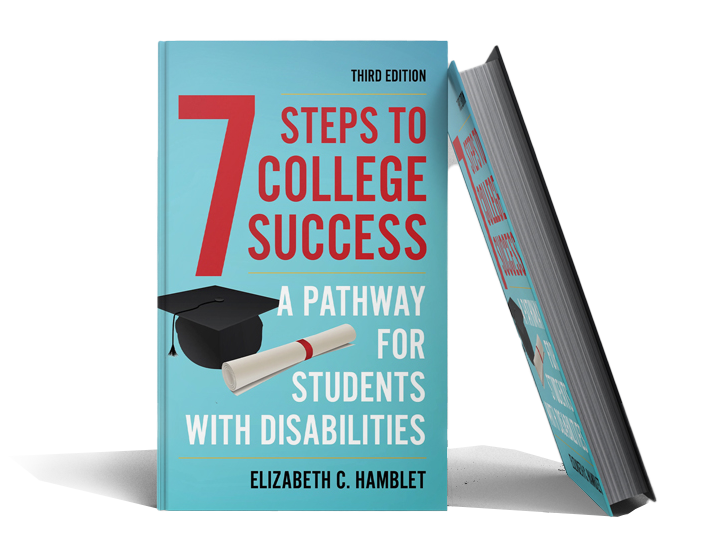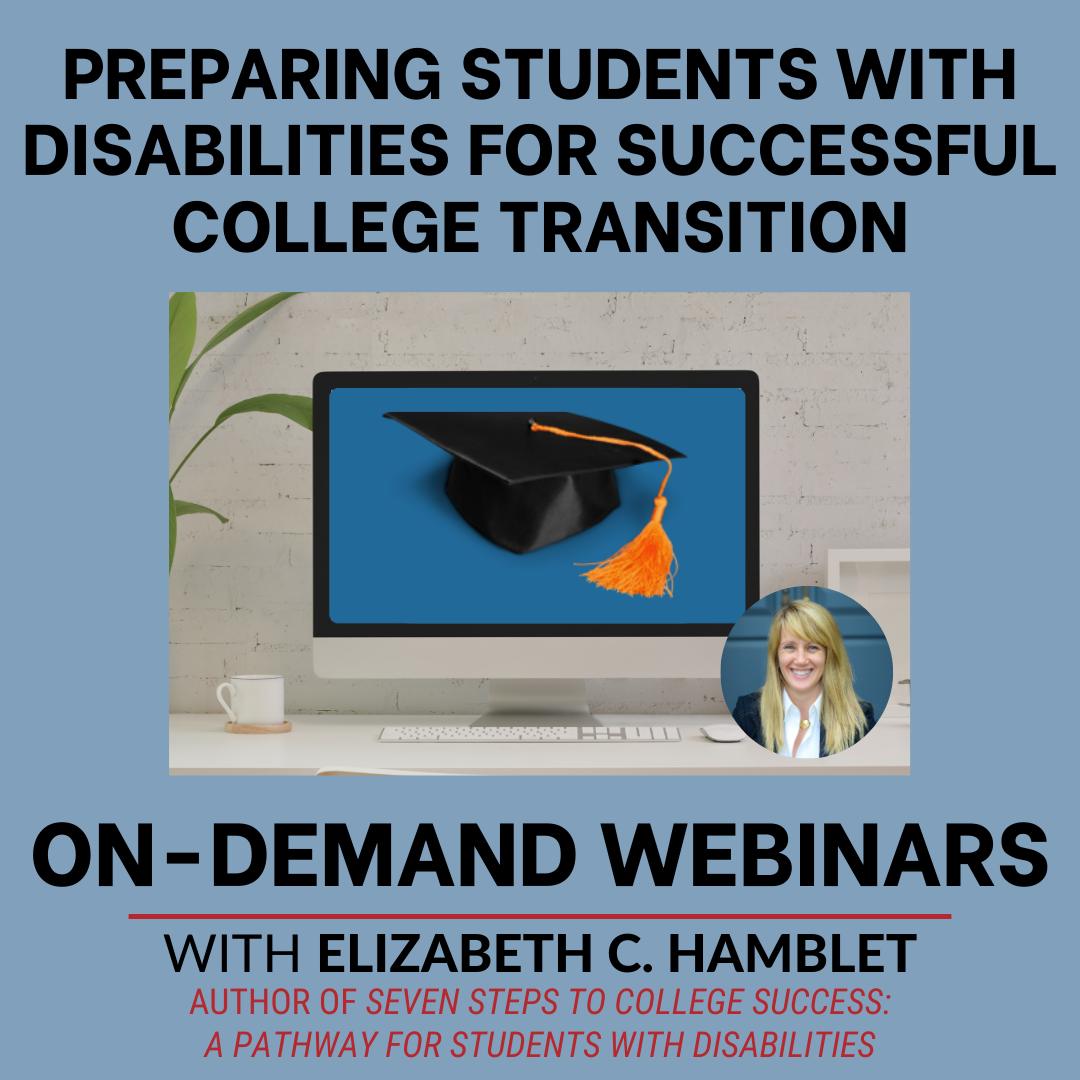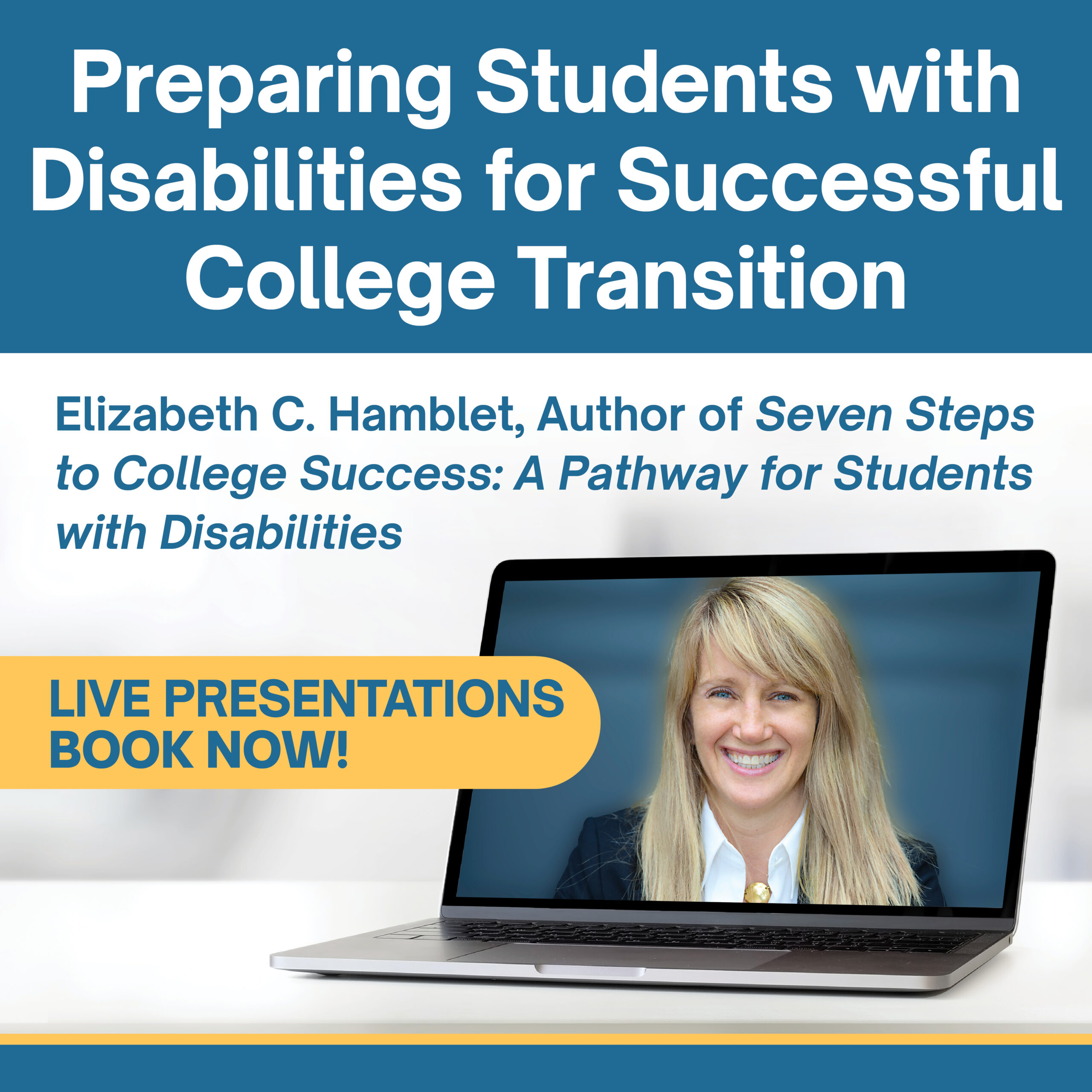Introduction
When I was developing my second book, I interviewed Kim Drew, who was a transition specialist at the time. In addition to handling her caseload, Drew co-taught a credit-bearing class for second-semester high school seniors who planned to go on to postsecondary education. But she also knew that helping her students prepare for a successful college transition would mean starting discussions much earlier – beginning in freshman year. In this post, Drew shares some of the activities she used to get her students thinking about and ready for college, and to engage their families in the process, too.
College Research Activity
In one activity, I had students make a list of 3-5 colleges they were interested in and create a spreadsheet that included the following information:
- Location of the college
- Distance from home & cost of bus/train/airfare there (as a way of opening discussion about how often students would be able to come home)
- Basic entrance requirements (ACT vs. SAT scores, specific coursework completed, etc.)
- Tuition costs
- Room and board costs, as well as any requirements for the length of time a student had to live in a dorm
- Does this school have the major/minor the student is interested in?
Once they had completed their spreadsheet, students were asked to share it with their parents to discuss the financial implication of the colleges they had chosen.
Self-Advocacy and Self-Determination Activities
I assigned students to review their special education file to learn what their diagnosis was and when they began receiving special education services. They also reviewed their most-current IEP to look over the current listing of accommodations available to them.
As part of the course I taught, I required each student to have a discussion with at least one of their teachers prior to their finals to talk about their accommodations, why those things were necessary for the student and how that helped them perform better on a final exam. The students had a form that they had to have signed by the teacher and returned it to me. This gave them some practice as to what might be required at the collegiate level if they needed accommodations in testing situations.
I also emphasized the value of taking high school courses in the field of study they felt they were interested in majoring in at college and even trying to get some work experience in that area.
I had one student who was sure she wanted to be a vet tech. An unpaid work experience was set up for her at a local vet clinic. The student did a great job with the day-to-day duties of cleaning kennels, helping with baths and grooming, observing surgeries, etc.. But – the day she had to witness a dog being euthanized, she came back to school to tell me she couldn’t do that job. So – our exploration began anew…
College Nights for Families
Outside of the class, I knew that I needed to talk to students and their families long before the students became seniors. One of the ways I did this was by holding parents’ nights for all of the different grade levels in the high school, where I made presentations covering items important at each stage. For parents of freshmen, I:
- reviewed the high school’s graduation requirements and discussed the various program options available at the technical school
- explained the difference between an accommodation and a modification
- provided a list of available post-secondary options, including apprenticeships and the military
- showed parents the admissions requirements for the state universities. and provided ideas to help families start probing their student’s interests (e.g., arrange job visits)
For parents of sophomores and juniors, I did the same and then zeroed in on college admissions, encouraging them to start looking at the requirements for the schools that interested their student and prompting them to think about whether or not their students could meet them.
The program for parents of seniors again reviewed the range of postsecondary options and talked about college application basics (e.g., FAFSA forms, sending standardized scores). I also mentioned the availability of basic accommodations at college and recommended parents help their student with some basic banking experiences.
In addition to giving these presentations, I created numerous handouts for students with helpful charts explaining the differences between high school and college in areas such as grade weighting, class size, instructor availability, and accommodations.
Advising Parents
In talking with parents about preparation for their student’s life after high school, I tried to encourage them not to “over-function” for their kids. I explained that no one wanted to see their students fail, but that when they were only successful because their parents and teachers had put in more effort than they had, they would not learn what they need to know before they moved to the next level. I explained that it was better to let students see the results of their effort (or lack of effort) in high school where they would have the opportunity for a “do over” rather than to wait until college when that would not be an option and they might have to course (and pay) for it) again.




